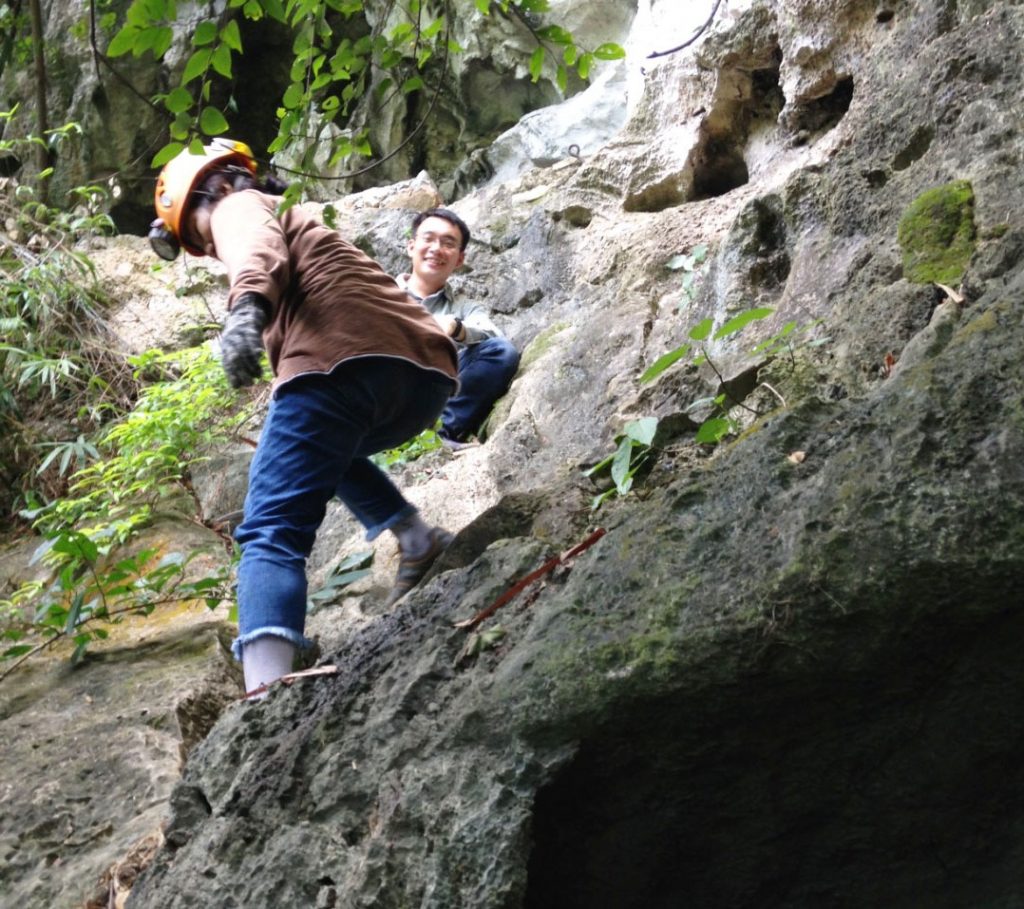In exploring Halong Bay, visiting the caves is an activity that tourists can not ignore. However, the development, invasion of lamp-flora have deformed the natural ecology of the caves. Therefore, about aesthetics as well as ecology, it is necessary to offer solutions to control and limit the influences of llamp-flora.
“Lamp-flora” is a plant community growing in areas where there is only artificial light without natural light. These plants can be algae, blue algae, mosses or ferns. They do not only lose the aesthetics but also have a great influence on the natural existence and beauty of the stalagmites and stalactites in the cave. According to the researchers, there are many factors that determine the development of Lamp-flora, such as: light intensity, wavelength, temperature, humidity, air pressure, wind speed, CO2, NOx, …
Currently, in Ha Long Bay, there are some tourism caves, such as: Sung Sot cave, Thien Cung cave,…These caves have been installed light system, improved the way to serve tourists. Lamps in these caves are incandescent and neon lights with different colors intstalling on the walls or under of the caves and under the roof to illuminate the stalagmite and stalactites, stalactites attracting the attention of visitors. These lights is turned on continuously from morning to afternoon to serve tourists. This is also one of the favorable conditions for Lamp-floras to grow, cover the surface of the stalagmites and stalactites, make blue, gray surface (when dying). This reduces the aesthetic value of the heritage in the caves.

Lamp-flora develope in Cave of Ha Long Bay
The management of Ha Long Bay has discovered this situation and cooperated with Viet Nam Center on Karst and Geoheritage, Vietnam Institute of Geosciences and Mineral Resources deployed the project “Research the influences of artificial light to the development and invasion of plants in caves in Ha Long Bay, test the treatment and offer effective solutions to limit the influences of plants in the caves.”
Scientific research and practical implementation of the project consists of three main contents: 1) Study overview documents about lamp-flora and solutions to treat and limit the influences of plants in caves in the world and Vietnam; 2) Research status development of vegetationon stalactites in some typical caves in Ha Long Bay; 3) test the treatment of lamp-flora in caves in Ha Long Bay by chemical methods and lighting suitably. Equivalent to the three contents are 9 thematic reports (intermediate products).
At present, Viet Nam Center on Karst and Geoheritage are gradually deploying research, survey and evaluation activities to meet the requirements and schedule. These products are created by analyzing and evaluating the actual survey database of scientists and staff of Viet Nam Center on Karst and Geoheritage and the Hanoi University of Natural Sciences, with experience, high expertise and full facilities. The products are also based on quantitative and qualitative methods, which are being used by developed countries in the world and adapted to the actual conditions in the study area to ensure reliable data sources , high accuracy, scientific and practical application.

Collecting Sample and measure microclimate in the Sung Sot cave.


Some activities of researchers in Ha Long Bay.
This is the first research topic done in karst caves in Ha Long Bay. The results of research about types of lamp-flora, microclimate conditions in the cave and the correlation of these two factors is an important scientific basis to study and preserve caves in Ha Long Bay. In addition, suggestions on lamp-flora treatment processes, optimal lighting scenarios and policy mechanisms, cave management guidelines play an important role in the planning of cave management strategies in Halong Bay in the future and the preservation of the cave heritage values.
 VCKG Viet Nam Center on Karst and Geoheritage
VCKG Viet Nam Center on Karst and Geoheritage